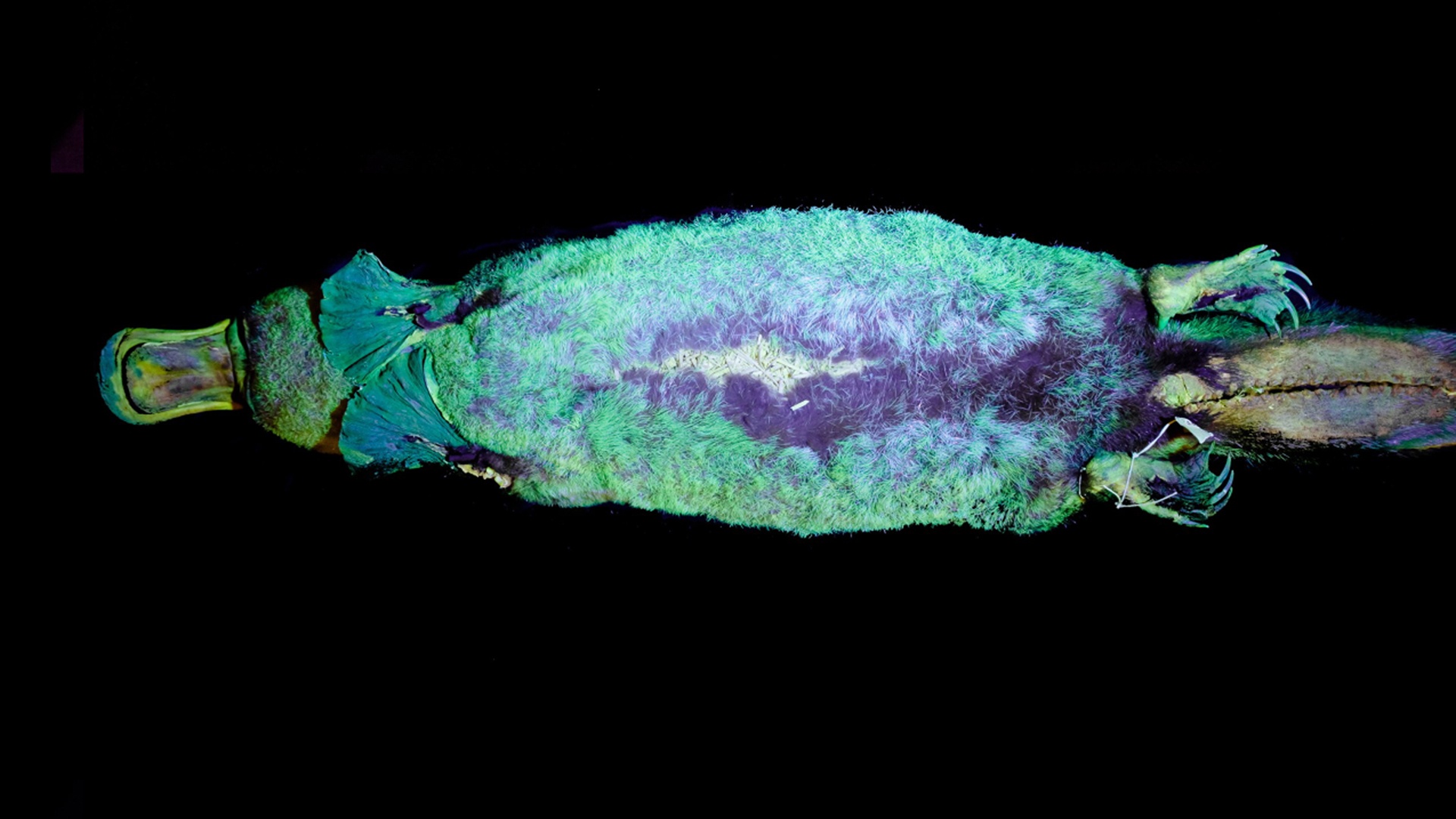The platypus is one of the most unusual creatures known on this planet. They are river and lake dwelling animals that inhabit most of Eastern Australia, previously renowned for being mammals which also lay eggs, as well as having characteristic duck bills and venomous spines on their legs which help them catch prey. They swim blind and instead use electromagnetic fields to help them find prey. To add to this list, scientists have recently discovered another bizarre characteristic of these strange semi-aquatic mammals: it appears their fur glows in the dark! Under UV light the normally dense brown fur glows blue/green.
This phenomenon is not unique to the platypus, and in fact only expands the growing understanding of biofluorescence -the ability for living organisms to naturally glow in the dark – in the animal kingdom. Previously, biofluorescence has been found to be common in fruits, flowers, plants and fungi. In addition to this, recent studies have found that turtle shells, frogs, opossum and flying squirrels can do the same. Interestingly, not all the animals glow the same colour. For example, while the platypus has a green-blue glow, the flying squirrel has a pink glowing belly. Other animals can glow red, yellow, purple and orange.

The biggest question that remains is why do they glow? Many of these animals, including the flying squirrel, opossum and platypus, are all nocturnal creatures, suggesting this is a factor in biofluorescence development. In birds and fish, biofluorescence has an active role in mating rituals and can even be used as a method of communication.
However, as platypuses tend to swim with their eyes closed to protect them from the water and help them stay underwater for longer, this is unlikely an identifying feature for communication or mating. Some have suggested a glowing coat may be a defence mechanism. Reflection of blue-green light could prevent them from being seen by predators that are able to see UV light such as birds of prey, one of the platypus’s main predators. This would appear to be similar in the flying squirrel, which uses the glow as a way to camouflage itself in the trees. Others dismiss this and argue it is simply a useless ancestral trait.
Regardless of the function, this discovery has left the science community equally baffled and intrigued about what else there is to uncover about the platypus.
By Indi Lacey
Header image: Live Science

